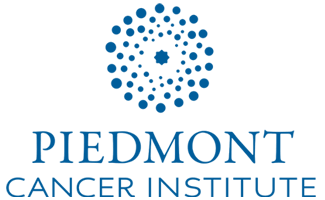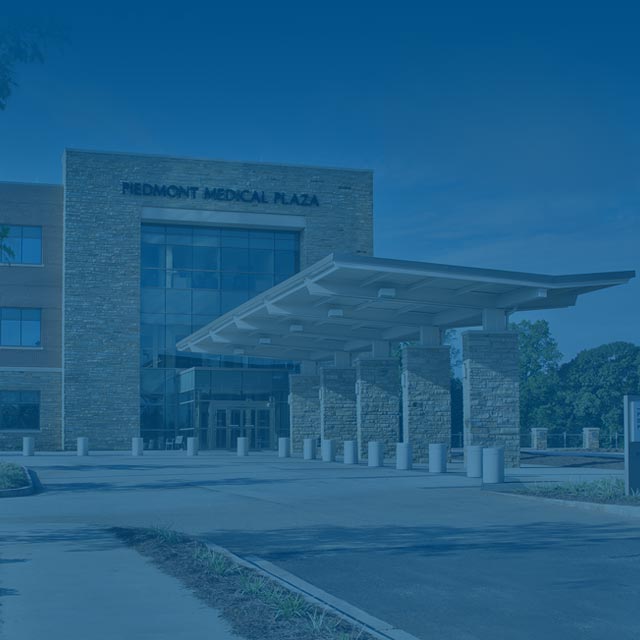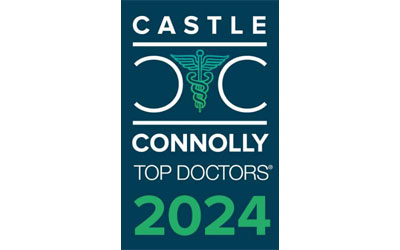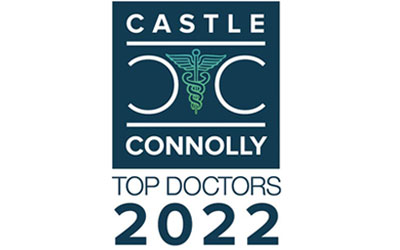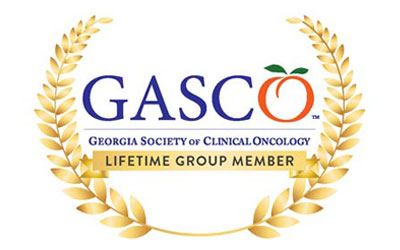Non-Hodgkin Lymphoma
General Information About Adult Non-Hodgkin Lymphoma
Key Points for This Section
- Adult non-Hodgkin lymphoma is a disease in which malignant (cancer) cells form in the lymph system.
- There are many different types of lymphoma.
- Age, gender, and a weakened immune system can affect the risk of developing adult non-Hodgkin lymphoma.
- Possible signs of adult non-Hodgkin lymphoma include fever, sweating, fatigue, and weight loss.
- Tests that examine the body and lymph system are used to help detect (find) and diagnose adult non-Hodgkin lymphoma.
- Certain factors affect prognosis (chance of recovery) and treatment options.
Adult non-Hodgkin lymphoma is a disease in which malignant (cancer) cells form in the lymph system.
The lymph system is part of the immune system and is made up of the following:
- Lymph: Colorless, watery fluid that travels through the lymph system and carries white blood cells called lymphocytes. Lymphocytes protect the body against infections and the growth of tumors.
- Lymph vessels: A network of thin tubes that collect lymph from different parts of the body and return it to the bloodstream.
- Lymph nodes: Small, bean-shaped structures that filter lymph and store white blood cells that help fight infection and disease. Lymph nodes are located along the network of lymph vessels found throughout the body. Clusters of lymph nodes are found in the underarm, pelvis, neck, abdomen, and groin.
- Spleen: An organ that makes lymphocytes, filters the blood, stores blood cells, and destroys old blood cells. It is on the left side of the abdomen near the stomach.
- Thymus: An organ in which lymphocytes grow and multiply. The thymus is in the chest behind the breastbone.
- Tonsils: Two small masses of lymph tissue at the back of the throat. The tonsils make lymphocytes.
- Bone marrow: The soft, spongy tissue in the center of large bones. Bone marrow makes white blood cells, red blood cells, and platelets.
Because lymph tissue is found throughout the body, adult non-Hodgkin lymphoma can begin in almost any part of the body. Cancer can spread to the liver and many other organs and tissues.
Non-Hodgkin lymphoma in pregnant women is the same as the disease in nonpregnant women of childbearing age. However, treatment is different for pregnant women. This summary includes information on the treatment of non-Hodgkin lymphoma during pregnancy
Non-Hodgkin lymphoma can occur in both adults and children. Treatment for children, however, is different than treatment for adults. (See the PDQ summary on Childhood Non-Hodgkin Lymphoma Treatment for more information.)
There are many different types of lymphoma.
Lymphomas are divided into two general types: Hodgkin lymphoma and non-Hodgkin lymphoma. This summary is about the treatment of adult non-Hodgkin lymphoma. For information about other types of lymphoma, see the following PDQ summaries:
- Adult Acute Lymphoblastic Leukemia Treatment
- Adult Hodgkin Lymphoma Treatment
- AIDS-Related Lymphoma Treatment
- Chronic Lymphocytic Leukemia Treatment
- Hairy Cell Leukemia Treatment
- Plasma Cell Neoplasms (Including Multiple Myeloma) Treatment
- Mycosis Fungoides and the Sézary Syndrome Treatment
- Primary CNS Lymphoma Treatment
- Childhood Non-Hodgkin Lymphoma Treatment
Age, gender, and a weakened immune system can affect the risk of developing adult non-Hodgkin lymphoma.
Anything that increases your risk of getting a disease is called a risk factor. Having a risk factor does not mean that you will get cancer; not having risk factors doesn’t mean that you will not get cancer. People who think they may be at risk should discuss this with their doctor. Risk factors for adult non-Hodgkin lymphoma include the following:
- Being older, male, or white.
- Having one of the following medical conditions:
- An inherited immune disorder (for example, hypogammaglobulinemia or Wiskott-Aldrich syndrome).
- An autoimmune disease (for example, rheumatoid arthritis, psoriasis, or Sjögren syndrome).
- HIV /AIDS.
- Human T-lymphotrophic virus type I or Epstein-Barr virus.
- A history of Helicobacter pylori infection.
- Taking immunosuppressant drugs after an organ transplant.
- Being exposed to certain pesticides.
- A diet high in meats and fat.
- Past treatment for Hodgkin lymphoma.
Possible signs of adult non-Hodgkin lymphoma include fever, sweating, fatigue, and weight loss.
These and other symptoms may be caused by adult non-Hodgkin lymphoma. Other conditions may cause the same symptoms. A doctor should be consulted if any of the following problems occur:
- Painless swelling in the lymph nodes in the neck, underarm, groin, or stomach.
- Fever for no known reason.
- Drenching night sweats.
- Feeling very tired.
- Weight loss for no known reason.
- Skin rash or itchy skin.
- Pain in the chest, abdomen, or bones for no known reason.
Tests that examine the body and lymph system are used to help detect (find) and diagnose adult non-Hodgkin lymphoma.
The following tests and procedures may be used:
- Physical exam and history: An exam of the body to check general signs of health, including checking for signs of disease, such as lumps or anything else that seems unusual. A history of the patient’s health habits and past illnesses and treatments will also be taken.
- Bone marrow aspiration and biopsy: The removal of bone marrow, blood, and a small piece of bone by inserting a needle into the hipbone or breastbone. A pathologist views the bone marrow, blood, and bone under a microscope to look for signs of cancer.
- Lumbar puncture: A procedure used to collect cerebrospinal fluid from the spinal column. This is done by placing a needle into the spinal column. This procedure is also called an LP or spinal tap. A pathologist views the cerebrospinal fluid under a microscope to look for signs of cancer.
- Lymph node biopsy: The removal of all or part of a lymph node. A pathologist views the tissue under a microscope to look for cancer cells. One of the following types of biopsies may be done:
- Excisional biopsy: The removal of an entire lymph node.
- Incisional biopsy: The removal of part of a lymph node.
- Core biopsy: The removal of part of a lymph node using a wide needle.
- Fine-needle aspiration (FNA) biopsy: The removal of tissue or fluid using a thin needle.
- Laparoscopy: A surgical procedure to look at the organs inside the abdomen to check for signs of disease. Small incisions (cuts) are made in the wall of the abdomen and a laparoscope (a thin, lighted tube) is inserted into one of the incisions. Other instruments may be inserted through the same or other incisions to perform procedures such as removing organs or taking tissue samples to be checked under a microscope for signs of disease.
- Laparotomy: A surgical procedure in which an incision (cut) is made in the wall of the abdomen to check the inside of the abdomen for signs of disease. The size of the incision depends on the reason the laparotomy is being done. Sometimes organs are removed or tissue samples are taken and checked under a microscope for signs of disease.
If cancer is found, the following tests may be done to study the cancer cells:
- Immunohistochemistry study: A laboratory test in which a substance such as an antibody, dye, or radioisotope is added to a sample of cancer tissue to test for certain antigens. This type of study is used to tell the difference between different types of cancer.
- Cytogenetic analysis: A laboratory test in which cells in a sample of tissue are viewed under a microscope to look for certain changes in the chromosomes.
- Immunophenotyping: A process used to identify cells, based on the types of antigens or markers on the surface of the cell. This process is used to diagnose specific types of leukemia and lymphoma by comparing the cancer cells to normal cells of the immune system.
Certain factors affect prognosis (chance of recovery) and treatment options.
The prognosis (chance of recovery) and treatment options depend on the following:
- The stage of the cancer.
- The type of non-Hodgkin lymphoma.
- The patient’s age and general health.
- Whether the lymphoma has just been diagnosed or has recurred (come back).
Prognosis also depends on the level of LDH in the blood.
For non-Hodgkin lymphoma during pregnancy, the treatment options also depend on:
- The wishes of the patient
- Which trimester of pregnancy the patient is in.
Some types of non-Hodgkin lymphoma spread more quickly than others do. Most non-Hodgkin lymphomas that occur during pregnancy are aggressive. Delaying treatment of aggressive lymphoma until after the baby is born may lessen the mother's chance of survival. Immediate treatment is often recommended, even during pregnancy.
Stages of Adult Non-Hodgkin Lymphoma
Key Points for This Section
- After adult non-Hodgkin lymphoma has been diagnosed, tests are done to find out if cancer cells have spread within the lymph system or to other parts of the body.
- There are three ways that cancer spreads in the body.
- Stages of adult non-Hodgkin lymphoma may include E and S.
- The following stages are used for adult non-Hodgkin lymphoma:
- Stage I
- Stage II
- Stage III
- Stage IV
- Adult non-Hodgkin lymphomas are also described in terms of how fast they grow and the location of affected lymph nodes.
After adult non-Hodgkin lymphoma has been diagnosed, tests are done to find out if cancer cells have spread within the lymph system or to other parts of the body.
The process used to find out the type of cancer and if cancer cells have spread within the lymph system or to other parts of the body is called staging. The information gathered from the staging process determines the stage of the disease. It is important to know the stage of the disease in order to plan treatment. The following tests and procedures may be used in the staging process:
- Complete blood count (CBC): A procedure in which a sample of blood is drawn and checked for the following:
- The number of red blood cells, white blood cells, and platelets.
- The amount of hemoglobin (the protein that carries oxygen) in the red blood cells.
- The portion of the sample made up of red blood cells.
- Blood chemistry studies: A procedure in which a blood sample is checked to measure the amounts of certain substances released into the blood by organs and tissues in the body. An unusual (higher or lower than normal) amount of a substance can be a sign of disease in the organ or tissue that makes it.
- CT scan (CAT scan): A procedure that makes a series of detailed pictures of areas inside the body, such as the lung, lymph nodes, and liver, taken from different angles. The pictures are made by a computer linked to an x-ray machine. A dye may be injected into a vein or swallowed to help the organs or tissues show up more clearly. This procedure is also called computed tomography, computerized tomography, or computerized axial tomography.
- PET scan (positron emission tomography scan): A procedure to find malignant tumor cells in the body. A small amount of radioactive glucose (sugar) is injected into a vein. The PET scanner rotates around the body and makes a picture of where glucose is being used in the body. Malignant tumor cells show up brighter in the picture because they are more active and take up more glucose than normal cells do.
- MRI (magnetic resonance imaging): A procedure that uses a magnet, radio waves, and a computer to make a series of detailed pictures of areas inside the body. This procedure is also called nuclear magnetic resonance imaging (NMRI).
- Bone marrow aspiration and biopsy: The removal of bone marrow, blood, and a small piece of bone by inserting a needle into the hipbone or breastbone. A pathologist views the bone marrow, blood, and bone under a microscope to look for signs of cancer.
For pregnant women with non-Hodgkin lymphoma, staging tests that protect the fetus from the harms of radiation are used. These include MRI, bone marrow aspiration and biopsy, lumbar puncture, and ultrasound, which do not use radiation. An ultrasound exam is a procedure in which high-energy sound waves (ultrasound) are bounced off internal tissues or organs and make echoes. The echoes form a picture of body tissues called a sonogram.
There are three ways that cancer spreads in the body.
The three ways that cancer spreads in the body are:
- Through tissue. Cancer invades the surrounding normal tissue.
- Through the lymph system. Cancer invades the lymph system and travels through the lymph vessels to other places in the body.
- Through the blood. Cancer invades the veins and capillaries and travels through the blood to other places in the body.
When cancer cells break away from the primary (original) tumor and travel through the lymph or blood to other places in the body, another (secondary) tumor may form. This process is called metastasis. The secondary (metastatic) tumor is the same type of cancer as the primary tumor. For example, if breast cancer spreads to the bones, the cancer cells in the bones are actually breast cancer cells. The disease is metastatic breast cancer, not bone cancer.
Stages of adult non-Hodgkin lymphoma may include E and S.
Adult non-Hodgkin lymphoma may be described as follows:
- E: "E" stands for extranodal and means the cancer is found in an area or organ other than the lymph nodes or has spread to tissues beyond, but near, the major lymphatic areas.
- S: "S" stands for spleen and means the cancer is found in the spleen.
The following stages are used for adult non-Hodgkin lymphoma:
Stage I
Stage I adult non-Hodgkin lymphoma is divided into stage I and stage IE.
- Stage I: Cancer is found in one lymphatic area (lymph node group, tonsils and nearby tissue, thymus, or spleen).
- Stage IE: Cancer is found in one organ or area outside the lymph nodes.
Stage II
Stage II adult non-Hodgkin lymphoma is divided into stage II and stage IIE.
- Stage II: Cancer is found in two or more lymph node groups either above or below the diaphragm (the thin muscle below the lungs that helps breathing and separates the chest from the abdomen).
- Stage IIE: Cancer is found in one or more lymph node groups either above or below the diaphragm. Cancer is also found outside the lymph nodes in one organ or area on the same side of the diaphragm as the affected lymph nodes.
Stage III
Stage III adult non-Hodgkin lymphoma is divided into stage III, stage IIIE, stage IIIS, and stage IIIE+S.
- Stage III: Cancer is found in lymph node groups above and below the diaphragm (the thin muscle below the lungs that helps breathing and separates the chest from the abdomen).
- Stage IIIE: Cancer is found in lymph node groups above and below the diaphragm and outside the lymph nodes in a nearby organ or area.
- Stage IIIS: Cancer is found in lymph node groups above and below the diaphragm, and in the spleen.
- Stage IIIE+S: Cancer is found in lymph node groups above and below the diaphragm, outside the lymph nodes in a nearby organ or area, and in the spleen.
Stage IV
In stage IV adult non-Hodgkin lymphoma, the cancer:
- is found throughout one or more organs that are not part of a lymphatic area (lymph node group, tonsils and nearby tissue, thymus, or spleen), and may be in lymph nodes near those organs; or
- is found in one organ that is not part of a lymphatic area and has spread to organs or lymph nodes far away from that organ; or
- is found in the liver, bone marrow, cerebrospinal fluid (CSF), or lungs (other than cancer that has spread to the lungs from nearby areas).
Adult non-Hodgkin lymphomas are also described in terms of how fast they grow and the location of affected lymph nodes.
Indolent or aggressive:
- Indolent lymphomas: These tend to grow and spread slowly and have few symptoms.
- Aggressive lymphomas: These grow and spread quickly and have severe symptoms. Lymphoblastic lymphoma, diffuse small noncleaved cell lymphoma/Burkitt lymphoma, and mantle cell lymphoma are 3 types of aggressive adult non-Hodgkin lymphoma. Aggressive lymphomas are seen more often in patients who are HIV -positive (AIDS -related lymphoma).
Contiguous or noncontiguous:
- Contiguous lymphomas: Lymphomas in which the lymph nodes containing cancer are next to each other.
- Noncontiguous lymphomas: Lymphomas in which the lymph nodes containing cancer are not next to each other, but are on the same side of the diaphragm.
Recurrent Adult Non-Hodgkin Lymphoma
Recurrent adult non-Hodgkin lymphoma is cancer that has recurred (come back) after it has been treated. The lymphoma may come back in the lymph system or in other parts of the body. Indolent lymphoma may come back as aggressive lymphoma. Aggressive lymphoma may come back as indolent lymphoma.
Treatment Option Overview
Key Points for This Section
- There are different types of treatment for patients with non-Hodgkin lymphoma. Four types of standard treatment are used:
- Radiation therapy
- Chemotherapy
- Targeted therapy
- Watchful waiting
- New types of treatment are being tested in clinical trials.
- Vaccine therapy
- High-dose chemotherapy with stem cell transplant
- Patients may want to think about taking part in a clinical trial.
- Patients can enter clinical trials before, during, or after starting their cancer treatment.
- Follow-up tests may be needed.
There are different types of treatment for patients with non-Hodgkin lymphoma.
Different types of treatment are available for patients with non-Hodgkin lymphoma. Some treatments are standard (the currently used treatment), and some are being tested in clinical trials. A treatment clinical trial is a research study meant to help improve current treatments or obtain information on new treatments for patients with cancer. When clinical trials show that a new treatment is better than the standard treatment, the new treatment may become the standard treatment. Patients may want to think about taking part in a clinical trial. Some clinical trials are open only to patients who have not started treatment.
For pregnant women with non-Hodgkin lymphoma, treatment is carefully chosen to protect the fetus. Treatment decisions are based on the mother’s wishes, the stage of the non-Hodgkin lymphoma, and the age of the fetus. The treatment plan may change as the symptoms, cancer, and pregnancy change. Choosing the most appropriate cancer treatment is a decision that ideally involves the patient, family, and health care team.
Four types of standard treatment are used:
Radiation therapy
Radiation therapy is a cancer treatment that uses high-energy x-rays or other types of radiation to kill cancer cells and keep them from growing. There are two types of radiation therapy. External radiation therapy uses a machine outside the body to send radiation toward the cancer. Internal radiation therapy uses a radioactive substance sealed in needles, seeds, wires, or catheters that are placed directly into or near the cancer. The way the radiation therapy is given depends on the type and stage of the cancer being treated.
For pregnant women with non-Hodgkin lymphoma, radiation therapy should be postponed until after delivery, if possible, to avoid any risk to the fetus. If immediate treatment is needed, pregnant women may decide to continue the pregnancy and receive radiation therapy. However, lead used to shield the fetus may not protect it from scattered radiation that could possibly cause cancer in the future.
Chemotherapy
Chemotherapy is a cancer treatment that uses drugs to stop the growth of cancer cells, either by killing the cells or by stopping them from dividing. When chemotherapy is taken by mouth or injected into a vein or muscle, the drugs enter the bloodstream and can reach cancer cells throughout the body (systemic chemotherapy). When chemotherapy is placed directly into the cerebrospinal fluid, an organ, or a body cavity such as the abdomen, the drugs mainly affect cancer cells in those areas (regional chemotherapy). To treat certain types of adult non-Hodgkin lymphoma that spread to the brain, CNS prophylaxis (chemotherapy given to kill cancer cells in the brain or spinal cord) may be used. The way the chemotherapy is given depends on the type and stage of the cancer being treated.
Combination chemotherapy is treatment using two or more anticancer drugs. Steroid drugs may be added, to relieve swelling and inflammation.
In pregnant women, the fetus is exposed to chemotherapy when the mother is treated, and some anticancer drugs cause birth defects. Because anticancer drugs are passed to the fetus through the mother, both must be watched closely when chemotherapy is given.
See Drugs Approved for Non-Hodgkin Lymphoma for more information.
Targeted therapy
Targeted therapy is a type of treatment that uses drugs or other substances to identify and attack specific cancer cells without harming normal cells. Monoclonal antibody therapy is one type of targeted therapy used to treat adult non-Hodgkin lymphoma.
Monoclonal antibody therapy is a cancer treatment that uses antibodies made in the laboratory from a single type of immune system cell. These antibodies can identify substances on cancer cells or normal substances that may help cancer cells grow. The antibodies attach to the substances and kill the cancer cells, block their growth, or keep them from spreading. Monoclonal antibodies are given by infusion. They may be used alone or to carry drugs, toxins, or radioactive material directly to cancer cells. Monoclonal antibodies that have been joined to radioactive material are called radiolabeled monoclonal antibodies.
See Drugs Approved for Non-Hodgkin Lymphoma for more information.
Watchful waiting
Watchful waiting is closely monitoring a patient’s condition without giving any treatment until symptoms appear or change.
New types of treatment are being tested in clinical trials.
This summary section describes treatments that are being studied in clinical trials. It may not mention every new treatment being studied. Information about clinical trials is available from the NCI Web site.
Vaccine therapy
Vaccine therapy is a type of biologic therapy. Biologic therapy is a treatment that uses the patient’s immune system to fight cancer. Substances made by the body or made in a laboratory are used to boost, direct, or restore the body’s natural defenses against cancer. This type of cancer treatment is also called biotherapy or immunotherapy. Vaccine therapy can also be a type of targeted therapy.
High-dose chemotherapy with stem cell transplant
High-dose chemotherapy with stem cell transplant is a method of giving high doses of chemotherapy and replacing blood -forming cells destroyed by the cancer treatment. Stem cells (immature blood cells) are removed from the blood or bone marrow of the patient or a donor and are frozen and stored. After the chemotherapy is completed, the stored stem cells are thawed and given back to the patient through an infusion. These reinfused stem cells grow into (and restore) the body’s blood cells.
Patients may want to think about taking part in a clinical trial.
For some patients, taking part in a clinical trial may be the best treatment choice. Clinical trials are part of the cancer research process. Clinical trials are done to find out if new cancer treatments are safe and effective or better than the standard treatment.
Many of today's standard treatments for cancer are based on earlier clinical trials. Patients who take part in a clinical trial may receive the standard treatment or be among the first to receive a new treatment.
Patients who take part in clinical trials also help improve the way cancer will be treated in the future. Even when clinical trials do not lead to effective new treatments, they often answer important questions and help move research forward.
Patients can enter clinical trials before, during, or after starting their cancer treatment.
Some clinical trials only include patients who have not yet received treatment. Other trials test treatments for patients whose cancer has not gotten better. There are also clinical trials that test new ways to stop cancer from recurring (coming back) or reduce the side effects of cancer treatment.
Clinical trials are taking place in many parts of the country. See the Treatment Options section that follows for links to current treatment clinical trials. These have been retrieved from NCI's listing of clinical trials.
Follow-up tests may be needed.
Some of the tests that were done to diagnose the cancer or to find out the stage of the cancer may be repeated. Some tests will be repeated in order to see how well the treatment is working. Decisions about whether to continue, change, or stop treatment may be based on the results of these tests. This is sometimes called re-staging.
Some of the tests will continue to be done from time to time after treatment has ended. The results of these tests can show if your condition has changed or if the cancer has recurred (come back). These tests are sometimes called follow-up tests or check-ups.
Treatment Options for Non-Hodgkin Lymphoma
A link to a list of current clinical trials is included for each treatment section. For some types or stages of cancer, there may not be any trials listed. Check with your doctor for clinical trials that are not listed here but may be right for you.
Indolent, Stage I and Contiguous Stage II Adult Non-Hodgkin Lymphoma
Treatment of indolent, stage I and contiguous stage II adult non-Hodgkin lymphoma may include the following:
- Radiation therapy directed at the area where cancer is found.
- Watchful waiting.
- Chemotherapy with radiation therapy.
- Radiation therapy directed at the area where cancer is found and nearby lymph nodes.
- Monoclonal antibody therapy with or without chemotherapy.
- Treatments used for more advanced disease, in patients who can’t be treated with radiation therapy.
Check for U.S. clinical trials from NCI's list of cancer clinical trials that are now accepting patients with indolent, stage I adult non-Hodgkin lymphoma and indolent, contiguous stage II adult non-Hodgkin lymphoma. For more specific results, refine the search by using other search features, such as the location of the trial, the type of treatment, or the name of the drug. General information about clinical trials is available from the NCI Web site.
Aggressive, Stage I and Contiguous Stage II Adult Non-Hodgkin Lymphoma
Treatment of aggressive, stage I and contiguous stage II adult non-Hodgkin lymphoma may include the following:
- Combination chemotherapy with or without radiation therapy to areas where cancer is found.
- A clinical trial of monoclonal antibody therapy and combination chemotherapy with steroids. Radiation therapy may also be given.
Check for U.S. clinical trials from NCI's list of cancer clinical trials that are now accepting patients with aggressive, stage I adult non-Hodgkin lymphoma and aggressive, contiguous stage II adult non-Hodgkin lymphoma. For more specific results, refine the search by using other search features, such as the location of the trial, the type of treatment, or the name of the drug. General information about clinical trials is available from the NCI Web site.
Indolent, Noncontiguous Stage II/III/IV Adult Non-Hodgkin Lymphoma
Treatment of indolent, noncontiguous stage II /III /IV adult non-Hodgkin lymphoma may include the following:
- Watchful waiting for patients who do not have symptoms.
- Chemotherapy with or without steroids.
- Combination chemotherapy with steroids.
- Monoclonal antibody therapy with or without combination chemotherapy. Radiolabeled monoclonal antibody therapy.
- Radiation therapy directed at the area where cancer is found and nearby lymph nodes, for patients who have stage III disease.
- A clinical trial of chemotherapy with or without total-body irradiation (radiation therapy to the entire body) or radiolabeled monoclonal antibody therapy, followed by autologous or allogeneic stem cell transplant.
- A clinical trial of chemotherapy with or without vaccine therapy.
Check for U.S. clinical trials from NCI's list of cancer clinical trials that are now accepting patients with indolent, noncontiguous stage II adult non-Hodgkin lymphoma, indolent, stage III adult non-Hodgkin lymphoma and indolent, stage IV adult non-Hodgkin lymphoma. For more specific results, refine the search by using other search features, such as the location of the trial, the type of treatment, or the name of the drug. General information about clinical trials is available from the NCI Web site.
Aggressive, Noncontiguous Stage II/III/IV Adult Non-Hodgkin Lymphoma
Treatment of aggressive, noncontiguous stage II /III /IV adult non-Hodgkin lymphoma may include the following:
- Combination chemotherapy alone.
- Combination chemotherapy with radiation therapy or monoclonal antibody therapy.
- Combination chemotherapy with CNS prophylaxis.
- A clinical trial of autologous or allogeneic stem cell transplant for patients who are likely to relapse.
Check for U.S. clinical trials from NCI's list of cancer clinical trials that are now accepting patients with aggressive, noncontiguous stage II adult non-Hodgkin lymphoma, aggressive, stage III adult non-Hodgkin lymphoma and aggressive, stage IV adult non-Hodgkin lymphoma. For more specific results, refine the search by using other search features, such as the location of the trial, the type of treatment, or the name of the drug. General information about clinical trials is available from the NCI Web site.
Adult Lymphoblastic Lymphoma
Treatment of adult lymphoblastic lymphoma may include the following:
- Combination chemotherapy and CNS prophylaxis.
- A clinical trial of autologous or allogeneic stem cell transplant.
Check for U.S. clinical trials from NCI's list of cancer clinical trials that are now accepting patients with adult lymphoblastic lymphoma. For more specific results, refine the search by using other search features, such as the location of the trial, the type of treatment, or the name of the drug. General information about clinical trials is available from the NCI Web site.
Diffuse Small Noncleaved Cell/Burkitt Lymphoma
Treatment of adult diffuse small noncleaved cell/Burkitt lymphoma may include the following:
- Combination chemotherapy and CNS prophylaxis.
- A clinical trial of combination chemotherapy.
- A clinical trial of autologous or allogeneic stem cell transplant.
Check for U.S. clinical trials from NCI's list of cancer clinical trials that are now accepting patients with adult Burkitt lymphoma. For more specific results, refine the search by using other search features, such as the location of the trial, the type of treatment, or the name of the drug. General information about clinical trials is available from the NCI Web site.
Non-Hodgkin Lymphoma During Pregnancy
Aggressive Non-Hodgkin Lymphoma During the First Trimester of Pregnancy
When aggressive non-Hodgkin lymphoma is diagnosed in the first trimester of pregnancy, medical oncologists may advise the patient to end her pregnancy so that treatment may begin. Treatment is usually chemotherapy with or without radiation therapy.
Aggressive Non-Hodgkin Lymphoma During the Second and Third Trimester of Pregnancy
When possible, treatment should be postponed until after an early delivery, so that the fetus will not be exposed to anticancer drugs or radiation therapy. However, sometimes the cancer will need to be treated immediately in order to increase the mother's chance of survival.
Indolent Non-Hodgkin Lymphoma During Pregnancy
Women who have indolent (slow-growing) non-Hodgkin lymphoma can usually delay treatment with watchful waiting.
Recurrent Adult Non-Hodgkin Lymphoma
Indolent, Recurrent Adult Non-Hodgkin Lymphoma
Treatment of indolent, recurrent adult non-Hodgkin lymphoma may include the following:
- Chemotherapy with one or more drugs.
- Radiation therapy.
- Radiation therapy and/or chemotherapy as palliative therapy to relieve symptoms and improve quality of life.
- Monoclonal antibody therapy.
- A clinical trial of radiolabeled monoclonal antibody therapy.
- A clinical trial of monoclonal antibody therapy as palliative therapy to relieve symptoms and improve quality of life.
- A clinical trial of autologous or allogeneic stem cell transplant.
Treatment of indolent lymphoma that comes back as aggressive lymphoma may include the following:
- A clinical trial of autologous or allogeneic stem cell transplant.
- A clinical trial of combination chemotherapy followed by radiation therapy or stem cell transplant and radiation therapy.
- A clinical trial of monoclonal antibody therapy.
- A clinical trial of radiolabeled monoclonal antibody therapy.
Check for U.S. clinical trials from NCI's list of cancer clinical trials that are now accepting patients with indolent, recurrent adult non-Hodgkin lymphoma. For more specific results, refine the search by using other search features, such as the location of the trial, the type of treatment, or the name of the drug. General information about clinical trials is available from the NCI Web site.
Aggressive, Recurrent Adult Non-Hodgkin Lymphoma
Treatment of aggressive, recurrent adult non-Hodgkin lymphoma may include the following:
- Stem cell transplant.
- Monoclonal antibody therapy.
- A clinical trial of autologous or allogeneic stem cell transplant.
- A clinical trial of combination chemotherapy followed by radiation therapy or stem cell transplant and radiation therapy.
- A clinical trial of radiolabeled monoclonal antibody therapy.
Treatment of aggressive lymphoma that comes back as indolent lymphoma may include the following:
- Chemotherapy.
- Palliative therapy to relieve symptoms and improve quality of life.
Check for U.S. clinical trials from NCI's list of cancer clinical trials that are now accepting patients with aggressive, recurrent adult non-Hodgkin lymphoma. For more specific results, refine the search by using other search features, such as the location of the trial, the type of treatment, or the name of the drug. General information about clinical trials is available from the NCI Web site.
To Learn More About Adult Non-Hodgkin Lymphoma
For more information from the National Cancer Institute about adult non-Hodgkin lymphoma, see the following:
- Non-Hodgkin Lymphoma Home Page
- What You Need to Know About™ Non-Hodgkin Lymphoma
- Drugs Approved for Non-Hodgkin Lymphoma
- Targeted Cancer Therapies
- Understanding Cancer Series: Targeted Therapies (Advances in Targeted Therapies and Targeted Therapies for Lymphoma)
- Biological Therapies for Cancer: Questions and Answers
For general cancer information and other resources from the National Cancer Institute, see the following:
- What You Need to Know About™ Cancer
- Understanding Cancer Series: Cancer
- Cancer Staging
- Chemotherapy and You: Support for People With Cancer
- Radiation Therapy and You: Support for People With Cancer
- Coping with Cancer: Supportive and Palliative Care
- Cancer Library
- Information For Survivors/Caregivers/Advocates
For more information about Non-Hodgkin Lymphoma, please visit the National Cancer Institute.

